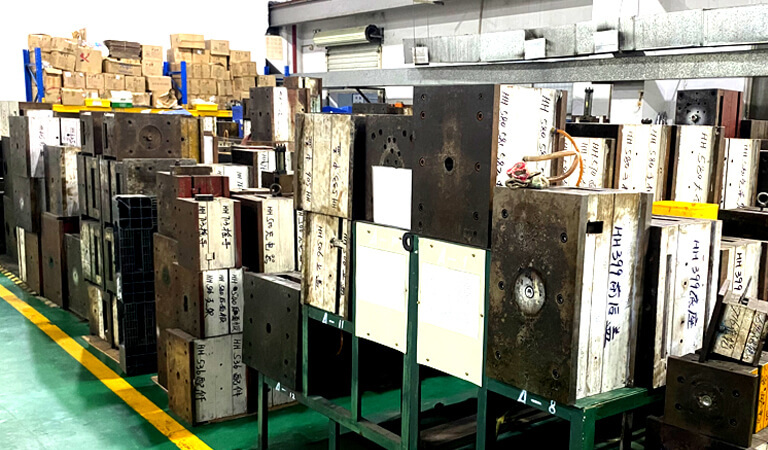Con la amplia aplicación de productos plásticos, como productos químicos de uso diario y envases de bebidas, ha aumentado la demanda de pulido espejo de cavidades de moldes de plástico. En particular, en la producción de lentes ópticas y discos láser, los requisitos de rugosidad y capacidad de pulido superficial son extremadamente altos.
El pulido no solo mejora la apariencia de la pieza, sino que también mejora la resistencia a la corrosión y al desgaste de la superficie del material. Además, ofrece otras ventajas, como un desmoldeo más sencillo y una reducción de los tiempos del ciclo de moldeo por inyección. Por lo tanto, el pulido es un proceso crucial en la fabricación de moldes de plástico.
Métodos comunes de pulido
Pulido mecánico
El pulido mecánico elimina las protuberancias de la superficie mediante el corte y la deformación plástica del material. Se suelen utilizar herramientas como piedras de aceite, ruedas de lana y papel de lija, siendo la operación manual el método principal. Para piezas especiales como superficies giratorias, se pueden utilizar platos giratorios y otras herramientas auxiliares. Para una alta calidad superficial, se pueden emplear métodos de pulido ultrafino. Esto implica el uso de herramientas de esmerilado especiales y fluidos de pulido con abrasivos, logrando una rugosidad superficial de hasta Ra0,008 μm. Este método se utiliza a menudo para moldes de lentes ópticas.
Pulido químico
El pulido químico consiste en disolver las microprotuberancias de la superficie del material en un medio químico para obtener una superficie lisa. La principal ventaja de este método es que no requiere equipos complejos y permite pulir piezas de formas complejas y múltiples piezas simultáneamente, lo que lo hace altamente eficiente. La clave del pulido químico reside en la formulación de la solución de pulido, que suele lograr una rugosidad superficial de varias decenas de micrómetros.
Pulido electrolítico
El principio del pulido electrolítico es similar al del pulido químico, donde la disolución selectiva de pequeñas protuberancias en la superficie del material alisa la superficie. En comparación con el pulido químico, este elimina la influencia de las reacciones catódicas y logra mejores resultados. El proceso de pulido electroquímico consta de dos pasos:
Macronivelación: Los productos de disolución se difunden en el electrolito, reduciendo la rugosidad de la superficie.
Micronivelación: La polarización anódica mejora el brillo de la superficie, logrando Ra < 1μm.
Pulido ultrasónico
El pulido ultrasónico consiste en colocar la pieza de trabajo en una suspensión de abrasivos y aplicar oscilaciones ultrasónicas, lo que provoca que los abrasivos pulan la superficie. Este método tiene una fuerza macroscópica mínima y no deforma la pieza de trabajo, pero es difícil de configurar y operar. La combinación del procesamiento ultrasónico con métodos químicos o electroquímicos puede mejorar aún más el brillo de la superficie.
Pulido de fluidos
El pulido fluido se basa en abrasivos que transportan fluidos a alta velocidad para decapar la superficie de la pieza. Los métodos más comunes incluyen el mecanizado por chorro abrasivo, el mecanizado por chorro de líquido y el pulido fluidodinámico. El pulido fluidodinámico utiliza medios líquidos accionados hidráulicamente con abrasivos que fluyen rápidamente sobre la superficie de la pieza. Se suelen utilizar como medios compuestos especiales con buenas propiedades de flujo a baja presión, mezclados con abrasivos como el polvo de carburo de silicio.
Pulido abrasivo magnético
El pulido abrasivo magnético utiliza abrasivos magnéticos bajo un campo magnético para formar un cepillo que pule la pieza de trabajo. Este método ofrece alta eficiencia, buena calidad, fácil control de las condiciones de procesamiento y condiciones de trabajo favorables. Con los abrasivos adecuados, la rugosidad superficial puede alcanzar Ra0,1 μm.
Factores que afectan la calidad del pulido
Varios factores influyen en la calidad del pulido:
Técnica de pulido
Dado que el pulido mecánico es principalmente manual, la habilidad del técnico influye significativamente en la calidad del pulido. Además, el material del molde, el estado de la superficie antes del pulido y el proceso de tratamiento térmico también influyen. Un acero de alta calidad es fundamental para lograr un pulido de alta calidad.
Dureza del material
Una mayor dureza del material dificulta el lijado, pero reduce la rugosidad superficial tras el pulido. Los materiales de mayor dureza requieren tiempos de pulido más largos, pero presentan un menor riesgo de sobrepulido.
Estado de la superficie de los productos
La superficie del acero puede dañarse durante el mecanizado debido al calor, la tensión u otros factores, lo que afecta el resultado del pulido. Los parámetros de corte y la precisión de la electroerosión también influyen en el resultado final del pulido.
Al seleccionar métodos de pulido apropiados y controlar los factores influyentes, se puede mejorar significativamente la calidad del pulido del molde para satisfacer las necesidades de producción de diversos productos plásticos.
Grandshine es una fábrica profesional especializada en la producción de moldes y la fabricación de productos OEM/ODM. Agradecemos sus consultas.



Artículos Relacionados
Garantía de calidad y control de calidad | Definición-Diferencia-Métodos-Proceso
¿Qué es el moldeo por inyección-part1
Algunos consejos lo ayudan a comprender las máquinas eléctricas de moldeo por inyección